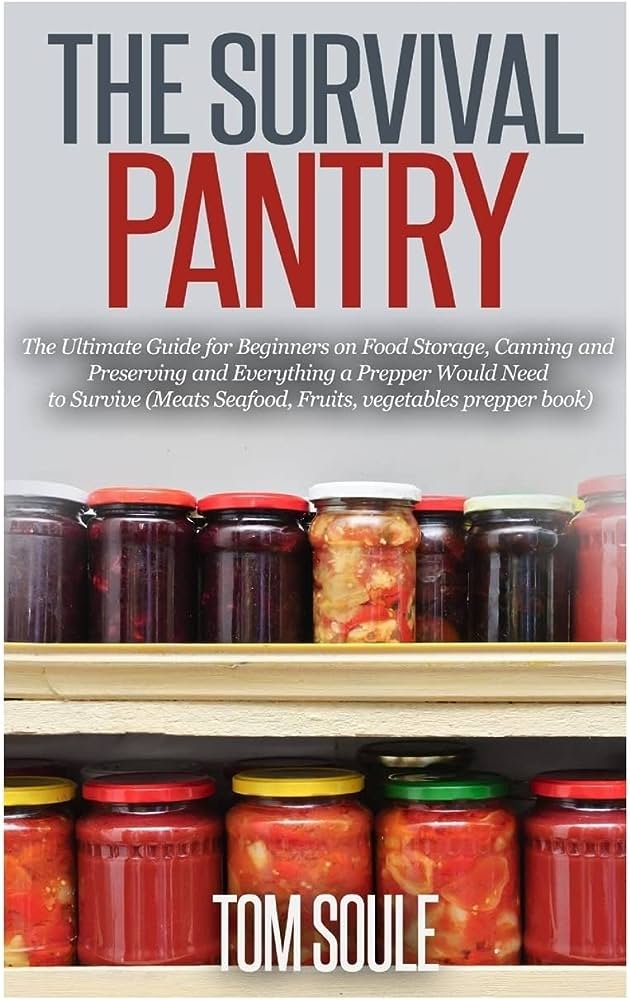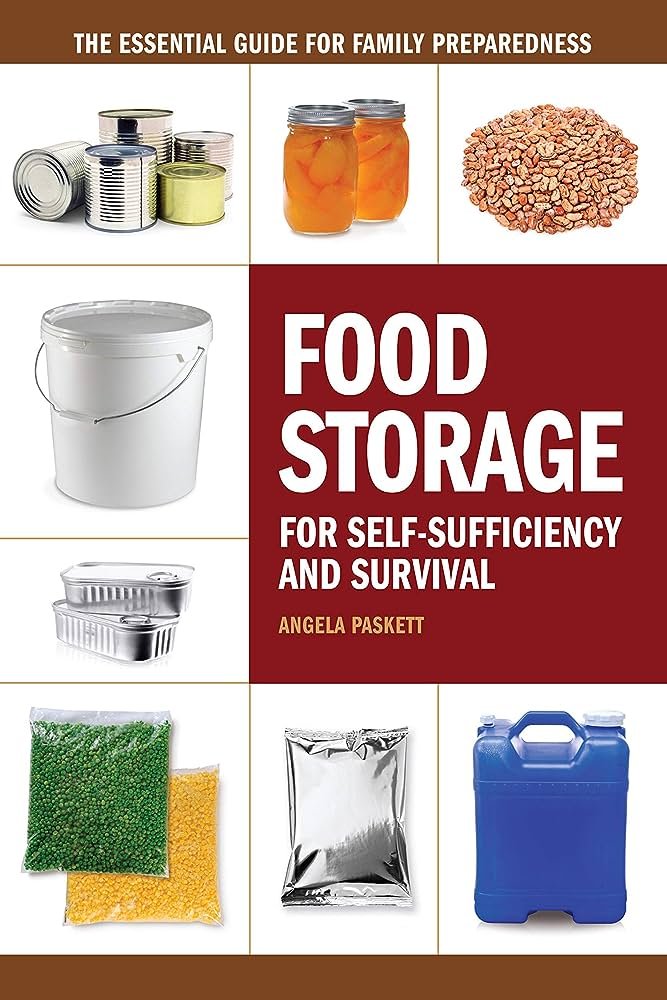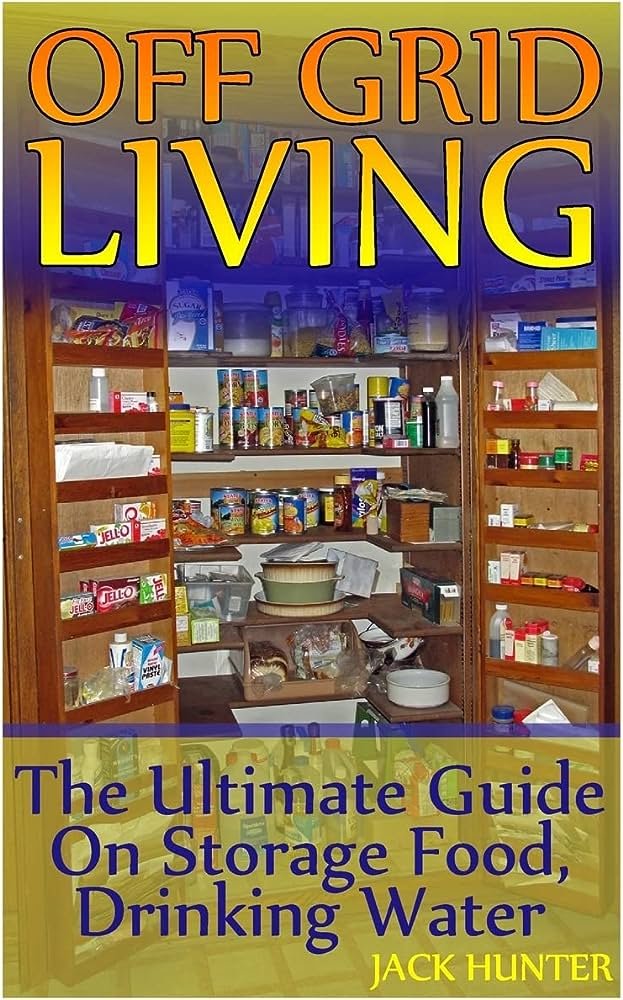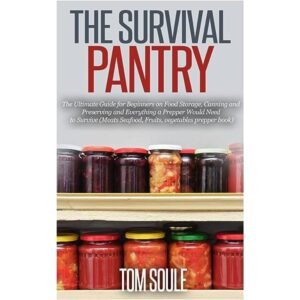Imagine yourself in a post-apocalyptic world, where resources are scarce and survival is the name of the game. In this daunting scenario, having a solid stockpile of survival food is crucial. That’s where the “Ultimate Guide to Survival Food Storage” comes in. This comprehensive guide provides you with all the information you need to know about survival food storage, including tips, tricks, and expert recommendations. From the best brands like 5.11 Tactical and Gerber Gear, to outdoor gear essentials from The North Face and Patagonia, this guide covers all aspects of survival food storage. So, whether you’re a seasoned prepper or just getting started, this guide is your go-to resource for ensuring that you and your loved ones are prepared for any situation.
Choosing the Right Survival Food Storage
When it comes to preparing for uncertain times or emergencies, having a reliable and well-stocked survival food storage is crucial. However, with so many options available, it can be overwhelming to know where to start. That’s why we’ve created this comprehensive guide to help you choose the right survival food storage for your needs. We’ll discuss various considerations to keep in mind, different types of survival food storage available, popular brands that offer quality products, and essential factors to consider for proper storage. So let’s dive in and get you prepared for any situation!
Considerations for selecting survival food storage
Choosing the right survival food storage requires careful thought and consideration. Here are some important factors to keep in mind:
Longevity of food supplies
When selecting survival food, you want to ensure that it will last for an extended period without spoiling. Look for options with a long shelf life, such as freeze-dried or dehydrated foods. These can last anywhere from 25 to 30 years when properly stored.
Nutritional content
In a survival situation, it’s essential to maintain proper nutrition to keep your energy levels up. Look for food storage options that provide a well-balanced and diverse range of nutrients. A varied diet is crucial to prevent any nutrient deficiencies.
Portability and weight
In an emergency, you may need to evacuate or move quickly. Consider the portability and weight of the food storage options you choose. Lightweight and compact options, such as freeze-dried meals or MREs (Meals Ready-to-Eat), are ideal for easy transportation.
Ease of preparation
When faced with limited resources and time, it’s important to have food that can be prepared quickly and easily. Look for options that require minimal preparation, such as just adding water or heating. This will save you valuable time and energy in a survival situation.
Budget considerations
Survival food storage can range in price, and it’s essential to find a balance between quality and affordability. Determine your budget and look for options that fit within your financial means without compromising on quality and nutritional value.
Allergies and dietary restrictions
Consider any allergies or dietary restrictions you or your family members may have. Many food storage options cater to specific dietary needs, such as gluten-free, vegetarian, or vegan diets. Make sure to choose options that accommodate these requirements.
Types of survival food storage
When it comes to survival food storage, there are several types to choose from. Each type has its own advantages and considerations. Here are some of the most popular options:
Canned food
Canned food is a popular choice for survival food storage due to its long shelf life and convenience. It is a great option for non-perishable items such as vegetables, fruits, soups, and meats. Canned food can last several years when stored properly.
Freeze-dried food
Freeze-dried food is a lightweight and compact option that is ideal for emergency situations. It involves removing the water content from the food, making it significantly lighter and easier to transport. Freeze-dried meals can be rehydrated with water, making them a convenient choice.
Dehydrated food
Similar to freeze-dried food, dehydrated food also removes moisture from the food. While it may not be as lightweight as freeze-dried options, dehydrated food still offers a long shelf life and retains most of its nutritional content.
MREs (Meals Ready-to-Eat)
MREs are pre-packaged meals specifically designed for survival situations. They require no additional water or heating and are ready to eat straight from the package. MREs often include a complete meal with main courses, side dishes, beverages, and desserts.
Bulk food options
If you have the storage space and ability to cook during an emergency, bulk food options such as rice, pasta, beans, and grains can be a cost-effective solution. These items can be purchased in large quantities and stored for an extended period.
Gardening and seeds
For those with the means and space, growing your own food can be an excellent long-term solution. Planting a survival garden and stockpiling seeds for various crops will ensure a renewable food source. However, gardening requires careful planning and ongoing maintenance.

Popular brands in survival food storage
When it comes to reliable survival food storage, several brands have established themselves as leaders in the industry. Here are some popular brands that offer quality products:
5.11 Tactical
5.11 Tactical offers a wide range of survival gear, including emergency food supplies. They prioritize durability, functionality, and performance in their products, making them a trusted brand in the survival community.
Blackhawk
Blackhawk specializes in supplying outdoor and survival equipment. Their survival food storage options are designed to withstand harsh conditions and provide essential nutrition during emergencies.
Gerber Gear
Well-known for their quality knives and tools, Gerber Gear also offers a variety of survival food storage options. Their products are designed to be lightweight, durable, and easy to prepare.
Leatherman
Leatherman is renowned for their multi-tools, but they also offer survival food storage options. Their products are known for their versatility and high-quality craftsmanship.
Benchmade
Benchmade is recognized as a top brand in the knife industry, and they also offer survival food storage solutions. Their products are known for their precision, durability, and reliability.
SOG Specialty Knives & Tools
SOG Specialty Knives & Tools is a trusted brand that provides a range of survival gear, including emergency food storage options. Their products are known for their ruggedness, functionality, and innovation.
Columbia Sportswear
While primarily known for their outdoor apparel, Columbia Sportswear also offers survival food storage options. Their products focus on quality, versatility, and practicality.
The North Face
The North Face is a well-respected brand in the outdoor industry, offering reliable gear for various activities. Their survival food storage options prioritize durability, functionality, and ease of use.
Patagonia
Patagonia is committed to sustainable and environmentally-friendly practices. Alongside their outdoor apparel, they provide survival food storage options that emphasize organic and ethically sourced ingredients.
Arc’teryx
Arc’teryx is a premium outdoor brand known for its innovative and high-performance products. While they mainly focus on apparel, they also offer survival food storage options designed to withstand challenging conditions.
Essential Factors for Survival Food Storage
Aside from choosing the right type of survival food storage, there are several essential factors to consider for successful long-term storage:
Shelf life and expiration dates
Understanding the shelf life and expiration dates of your food supplies is crucial. Different types of food have varying expiration dates, and it’s important to rotate and consume items before they go bad.
Proper storage conditions
Maintaining proper storage conditions is essential to prolong the shelf life of your survival food. Temperature and humidity control, along with protecting against pests, are crucial aspects to consider.
Rotating food supplies
Using the first in, first out (FIFO) method ensures that older food items are consumed first, reducing the risk of spoilage or wastage. Regularly monitoring and updating your food inventory will help maintain a fresh and reliable supply.
Water storage and purification
Water is vital for survival, so it’s essential to have a reliable water storage plan. Determine your water storage needs and invest in appropriate containers. Additionally, consider methods of water purification to ensure a safe water supply during emergencies.
Cooking and heating methods
In an emergency situation, your usual cooking and heating methods may not be available. It’s important to have alternative cooking methods, such as portable stoves or solar-powered devices, to prepare your stored food.
Food preservation techniques
Learning food preservation techniques, such as canning or dehydrating, can be beneficial for long-term survival. These methods allow you to extend the lifespan of fresh produce and create your own food storage items.

Shelf life and expiration dates
Understanding food expiration dates is crucial for maintaining a reliable survival food storage. Here are some important aspects to consider:
Understanding food expiration dates
Food expiration dates can be confusing, as different terms are used depending on the type of food. Best Before, Sell By, and Use By dates are commonly seen on packaging. Understanding what these terms mean will help you determine the freshness and quality of your food.
Factors affecting shelf life
Several factors can affect the shelf life of your survival food. These include temperature, exposure to light, humidity, oxygen, and pests. Proper storage conditions and regular monitoring are essential to prolong the shelf life of your food supplies.
Common long-lasting food options
Some food items have a naturally long shelf life, making them excellent choices for survival food storage. These include items like honey, sugar, salt, dried beans and legumes, rice, pasta, oats, canned goods, and certain types of dried fruits and vegetables.
Proper storage conditions
Creating optimal storage conditions for your survival food is crucial for maintaining its quality and extending its shelf life. Here are some factors to consider:
Temperature and humidity control
Extreme temperatures and excessive humidity can significantly impact the quality of your stored food. It’s important to store your food in a cool, dry place, ideally between 50°F and 70°F (10°C and 21°C) with humidity levels below 15-20%.
Pest prevention
Protecting your food supplies from pests is essential to avoid contamination and spoilage. Store your food in airtight containers or packaging and consider using traps or repellents to keep pests away.
Organizing food supplies
Properly organizing and labeling your food supplies will help you maintain an efficient and organized system. Use a system that allows for easy access to older items, ensuring they are used and rotated regularly.
Storing food near other essential items
Consider storing your survival food near other essential items, such as water, cooking equipment, and first aid supplies. This will help you access everything you need quickly during an emergency situation.

Rotating food supplies
To ensure the freshness and reliability of your survival food storage, it’s important to practice a rotation system. Here are some tips for effectively rotating your food supplies:
First in, first out (FIFO) method
Adopting the FIFO method means using the oldest food items first. When storing new supplies, place them behind older items to ensure that the older ones are used before their expiration dates.
Monitoring and updating food inventory
Regularly monitor your food inventory to keep track of expiration dates and ensure that you have a sufficient supply. Make a habit of checking your storage area periodically and updating your inventory list.
Using portions of stored food regularly
To keep your food storage fresh and familiarize yourself with the preparation process, incorporate portions of your stored food into your regular meals. This will also help you identify any issues with the food, such as flavor or texture changes, before an emergency arises.
Water storage and purification
In addition to food, water is a critical component of survival preparation. Here are some important considerations for water storage and purification:
Determining water storage needs
Calculate your water storage needs based on guidance from experts, which is generally one gallon (3.8 liters) per person per day. This includes drinking, cooking, and hygiene purposes. Plan accordingly for the number of people in your household and the duration of the emergency.
Water storage containers
Invest in appropriate water storage containers that are easy to clean, durable, and made from food-grade materials. Ideally, choose containers that are opaque to prevent light exposure, and consider options with built-in spigots for easy access.
Methods of water purification
Having reliable methods of water purification is essential to ensure a safe water supply during emergencies. This can include filters, water purification tablets, or UV sterilization devices. Familiarize yourself with the different options and choose what works best for your situation.

Conclusion
Having a well-prepared and well-stocked survival food storage is crucial for any emergency or uncertain times. By carefully considering the longevity, nutritional content, portability, ease of preparation, budget, allergies, and dietary restrictions, you can choose the right survival food storage for your needs. Whether you opt for canned food, freeze-dried, dehydrated options, MREs, bulk food, or even gardening and seeds, there are plenty of choices available. Additionally, popular brands such as 5.11 Tactical, Blackhawk, Gerber Gear, Leatherman, Benchmade, and more offer quality products to meet your survival needs. When storing your food supplies, remember to consider factors such as shelf life and expiration dates, proper storage conditions, rotating supplies, water storage, and purification methods. By taking these essential factors into account and adapting to your individual needs and circumstances, you’ll be well-prepared to face whatever challenges may come your way. So start taking action today and build your survival food storage for a more secure future.
